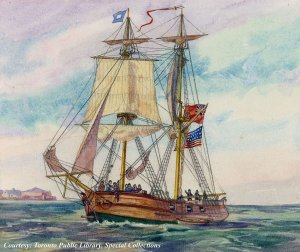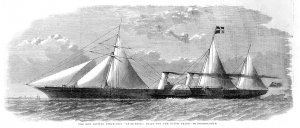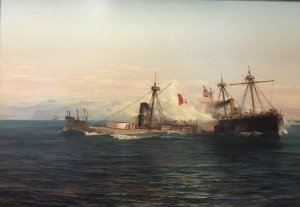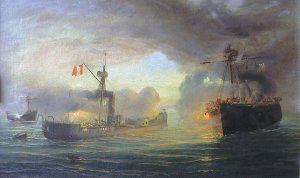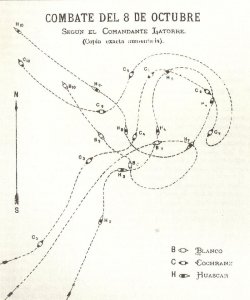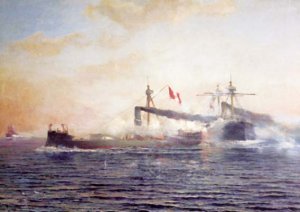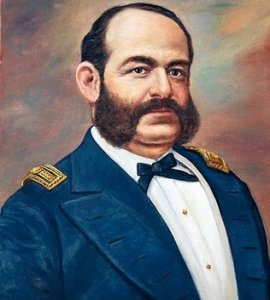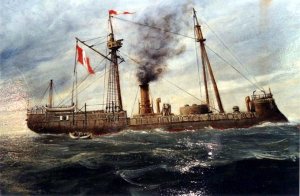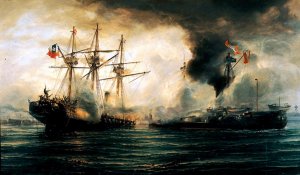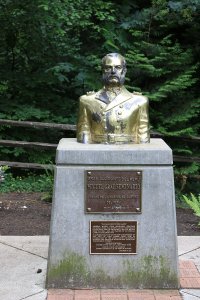Today in Naval History - Naval / Maritime Events in History
7 October 1800 – French corsair Robert Surcouf, commander of the 18-gun ship La Confiance, captures the British 38-gun East Indiaman Kent.
On 7 October 1800, off Sand Heads, near Calcutta, Confiance met the 40-gun East Indiaman Kent, of 824 tons burthen, under Captain Robert Rivington. Kent had rescued the crew of another ship, the Queen, destroyed by fire, and therefore had an exceptionally large complement of 437 men, including her passengers; 300 of them were soldiers and sailors; Surcouf managed to board his larger opponent and, after over an hour and a half of battle across the decks of the ship, seize control of the Kent.
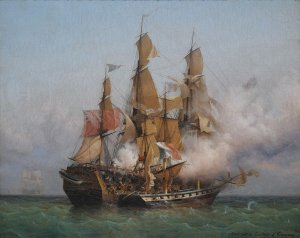
Capture of Kent by Confiance. Painting by Ambroise Louis Garneray.
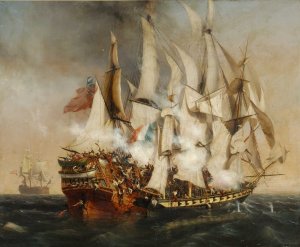
Capture of Kent by Confiance. Painting by Ambroise Louis Garneray
The British had fourteen killed, including the captain, and 44 wounded, while the French suffered five killed and ten wounded. The privateers were then granted one hour of free pillaging on Kent before Surcouf restored order; however, the female passengers were strictly protected and sentries were placed in front of their apartments. Amongst the prisoners were General Frederick St. John and his wife, Arabella Craven.
The first officer of Confiance, Joachim Drieux, was sent on Kent with a 60-man prize crew, while her passengers were released on a merchantman that Surcouf stopped a few days later. Confiance and Kent arrived at the Rade des Pavillons in Port-Louis in November. The capture of Kent became a sensation, and the British Admiralty promised a reward for the capture of Surcouf.

Surcouf returning to Port-Louis with his prizes (probably on Clarisse).
After her return to Ile de France, Confiance was armed as a merchantman en aventurier with an 89-man crew and loaded with colonial goods for her return to France. On the journey, Surcouf still managed to capture a number of ships, notably the Portuguese Ebre, with eighteen 12-pounder carronades and a 60-man crew; he released her against a ransom of 10,000 piastres and after exchanging her greatmast with that of Confiance.
Upon her return, Confiance ran into the British blockade and was chased by a frigate; Surcouf managed to evade her by throwing overboard all but one of her guns, his boats, anchors, chains and even components of his masts. He eventually arrived at La Rochelle on 13 April 1801.
In France, Navy Minister Truguet attempted to enrol Surcouf in the Navy as an auxiliary officer, which he declined. Hennequin states that Bonaparte himself offered him the rank of Captain and the command of two frigates, which Surcouf declined for fear of losing his freedom of action, and awarded him a Sabre of honour. Surcouf was awarded the Legion of Honour at the founding of the Order, on 19 May 1802.
The Ships
Kent, launched in 1799, was an East Indiaman of the British East India Company. On her first voyage in 1800 she was on her way to Bengal and Bencoolen when the French privateer Robert Surcouf captured her near the mouth of the Ganges.
Capture
Kent left Torbay on 3 May 1800. She was under the command of Robert Rivington, who sailed under a letter of marque dated 28 March 1800. At St. Salvador, she took on 300 persons, including troops and passengers, the survivors of the East Indiaman Queen, which had caught fire there and been destroyed, with in excess of 100 fatalities. Queen and Kent had left Torbay on the same day.
On 7 October Kent encountered the French privateer brig Confiance, of 18 guns and 150 men, under the command of Robert Surcouf.
French account
At some point Kent had rescued the crew and passengers of another ship, destroyed by fire, and therefore had an exceptionally large complement.[8]Including passengers, among whom there were some 100 soldiers, she had 437 persons aboard. Surcouf managed to board his larger opponent and seize control of Kent. The British had 14 men killed, including Rivington, and 44 wounded, while the French suffered five men killed and ten wounded.
British account
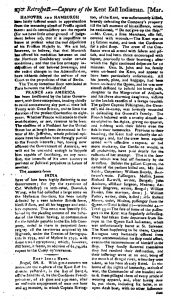
Account of the capture of Kent in The Gentleman's Magazine, October 1800
James reports that Kent fought for almost two hours and that Rivington was killed by a shot to the head as the French boarded. He states that Kent's armament consisted of twenty 12-pounders, and six 6-pounders on her castles, and that Confiance's armament consisted of 20-22 long 8-pounder guns. He speculates that if Kent had carried 18 or 24-pounder carronades instead of the long 6-pounders, she might have been able to use grapeshot to deter boarding. He further reports that in addition to her crew of 100 or so, she had some 38 male and three female passengers, including seven or eight passengers that she had picked up at St. Salvador, after a fire there had destroyed the Indiaman Queen on 9 July. Apparently some four or five passengers were among the British dead, and there were also passengers among the wounded. James attributes the crew being overwhelmed by the boarders to a shortage of swords, pikes and pistols.
Another account estimates the number of persons on Kent as under 200, and gives the casualties as 11 killed and 44 wounded on the British side, and 16 wounded (of whom three later died), on the French side. The passengers included General St. John, his wife, three daughters, two other women, and St. John's aide, Captain Pilkington, who had been wounded. Surcouf put them into a passing Arab merchantman and they arrived shortly thereafter in Calcutta.
Aftermath
Surcouf put his first officer, Joachim Drieux, aboard Kent, together with a 60-man prize crew. Surcouf released the passengers on a merchantman that he stopped a few days later. Confiance and Kent arrived at the Rade des Pavillons in Port Louis, Mauritius, in November. The capture of Kent became a sensation, and the British Admiralty promised a reward for the capture of Surcouf.
Her captors sold Kent for 30,900 piastres to a Danish shipping company, which renamed her Cronberg. She left on 21 March, but as she approached Denmark passing vessels informed her that a British fleet had attacked Copenhagen; she therefore waited some weeks in Fleckeroë before it was safe to proceed to arrive in Kristiansand in June 1801, and at Copenhagen on 16 July.
The EIC put the value of its cargo lost on Kent at £28,676.
Confiance, launched in 1797, was a privateer corvette from Bordeaux, famous for being Robert Surcouf's ship during the capture of the British East India Company's East Indiaman Kent. The British Royal Navy captured Confiance in 1805, took her into service under her existing name, and sold her in 1810. Before she was sold, Confiance took part in two notable actions.
French service
Completed in Bordeaux in November 1797, Confiance capsized at her launch and had to be refloated. On 3 February 1799 Confiance captured Echo as Echo was sailing from the Cape of Good Hope for London. Confiance sent Echo into France. 1799 Confiance was commissioned under Aurnaud Taudin in May 1799.
On 24 December 1799, Confiance encountered the American ship Atlantic and the British East India Company "extra ship" (chartered ship) Eliza Ann near the Sandheads in the Bay of Bengal. The engagement was inconclusive both that day and the next morning. Confiance broke off the action and sailed away early on Christmas morning.
In May 1800, Confiance was recommissioned in Île de France and her command was awarded to Robert Surcouf, with a complement of 23 officers and 190 men, and an armament of six 8-pounder long guns, sixteen 6-pounders and two 36-pounder obusiers de vaisseau. On 7 October, she encountered the East Indiaman Kent and captured her after a fierce battle; an 81-man prize crew under Joachim Drieux brought Kent to Île de France (Mauritius), where she was sold for 30,900 piastres.
In 1801, Confiance had her crew reduced to 89 men and sailed en aventurier to La Rochelle, loaded with colonial goods for her return to France. On the journey, Surcouf still managed to capture a number of ships, notably the Portuguese Ebre, with eighteen 12-pounder carronades and a 60-man crew; he released her against a ransom of 10,000 piastres and after exchanging her great mast for that of Confiance. After her arrival in France, Confiance was commissioned as a merchantman under Paul Castanet from May 1802.
Capture
By late 1803, she served in Muros, Spain, under Captain Roque and later under Papin. On 4 June 1805, HMS Loire attacked the town of Muros, in Spain, and captured Confiance, as well as her consort Bélier. Loire had six men wounded in the landing party that captured a fort, a battery, and the two vessels, and nine men wounded on Loire by fire from the batteries before the British could capture them. The Spaniards lost 12 men killed, including the commander of the fort and Confiance's 2nd captain, and 30 men wounded, including most of Confiance's officers. Captain Frederick Maitland, of Loire, reported that Confiance was a "very fit Ship for His Majesty's Service; is reckoned to sail excessively fast; was to have gone to Sea in a few Days, bound to India, with a Complement of 300 men". Maitland burnt Bélier, which he described as also fitting for sea, "supposed to be destined to cruise to Westward of Cape Clear."
The action led to promotion to Commander for Lieutenant James Lucas Yeo, who commanded the cutting out party. Lloyd's Patriotic Fund awarded a sword worth 150 guineas to Maitland, and two swords, each worth 50 guineas, to lieutenants Yeo and Mallock.
HMS Confiance
The British commissioned Confiance into the Royal Navy in June as an 18-gun sloop under the newly promoted Commander James Yeo, and for the Channel. (Confiance kept her status as a sloop until 1807, when the Admiralty re-rated her as a sixth rate. She remained at Plymouth from 19 June to 14 March 1806 undergoing fitting out.)
Confiance shared with Hero, Iris, and Révolutionnaire in the proceeds from the recapture on 11 January 1807 of the schooner Monarch.
On 18 August, as Confiance was sailing to Oporto, Yeo received information that the Reitrada, a small Spanish privateer lugger that had been active along the coast of Portugal, was anchored at La Guardia. Yeo sent in a cutting out party in Confiance's boats. They captured the lugger, which was armed with one 12 and two 4-pounder guns, and had a crew of 30 men. The Spaniards had one man killed, several wounded, and the rest of the crew jumped overboard. The privateer had sheltered under the guns of two forts, which fired on the boats as they came in. One fort was armed with four 24-pounder guns and the other with six 18-pounder guns; there were also 150 troops. Despite the Spaniards' fire, the British sustained no casualties.
Confiance sailed to Portugal on 16 January 1808. The French had captured Lisbon and the Royal Navy was maintaining a blockade in the Tagus where the onset of the Anglo-Russian War had trapped a squadron of Russian ships under the command of Vice-Admiral Dmitry Senyavin. Confiance was off the Tagus when on 13 February she sent her cutter and jolly boat, with 15 men under the command of Master's Mate R. Trist, to row picket because of rumours that Senyavin was about to leave. Trist observed a French gun-vessel anchored under the guns of Fort San Pedro, between Fort Belem and Fort Julian. He immediately attacked, capturing Gunboat #1, which was armed with one 24-pounder gun and two 6-pounder carronades. She had 100 stands of arms aboard, and a crew of 50 men under the command of ensign de vaisseau Gandolphe. The British suffered no casualties; the French had three men killed and nine wounded. Trist, who had passed his exams for Lieutenant a year earlier, received promotion to that rank for his feat. In 1847 the Admiralty issued the Naval General Service Medal (NGSM) with clasp "13 Feb. Boat Service 1808" to all surviving claimants from the action.
Confiance next sailed to Rio de Janeiro, Brazil. On 14 January 1809 Confiance captured Cayenne.
Main article: Portuguese conquest of French Guiana
Yeo received permission from the commander-in-chief of the Royal Navy's Brazil station, Admiral Sir Sidney Smith to mount an operation against the French. Yeo took Confiance, two armed Portuguese brigs, an unarmed Portuguese brig, a Portuguese cutter, and 4-500 Portuguese soldiers, and sailed to Oyapoc, in French Guiana, which they captured on 8 December 1808.[Note 3] A week later they captured Appruagoc (or Appruague).
Emboldened by the ease of their victories, Yeo and the Portuguese commander then decided to attack Cayenne. They captured three forts and defeated the French forces under the command of Victor Hugues, the French governor. British casualties were only one man killed and 23 men wounded.
On 13 January 1809, while Yeo was on shore with three-quarters of Confiance's crew, seamen and marines, the French frigate Topaze approached Cayenne. She was carrying flour and was under orders to avoid combat, but the British did not know that. Midshipman G. Yeo, Yeo's younger brother, another midshipman, the remaining 25 men of the crew, and 20 local Negroes that the two midshipmen induced to join them, set sail towards Topaze. Topaze, judging from the sloop's boldness that she had company that would be forthcoming, turned away. A few days later HMS Cleopatra captured Topaze.
King George knighted James Yeo in 1810 for his victory. In 1847 the Admiralty awarded the Naval General Service Medal with clasp "Confiance 14 Jany. 1809" to all surviving claimants from the operation.
Fate
The Principal Officers and Commissioners of His Majesty's Navy offered the "Confiance Sloop, 560 [Tons Burthen]", lying at Deptford, for sale on 22 December 1810. She sold on that day. She appears to have sailed as a merchantman at least until 1816.
https://en.wikipedia.org/wiki/Robert_Surcouf
https://en.wikipedia.org/wiki/Kent_(1799_ship)
7 October 1800 – French corsair Robert Surcouf, commander of the 18-gun ship La Confiance, captures the British 38-gun East Indiaman Kent.
On 7 October 1800, off Sand Heads, near Calcutta, Confiance met the 40-gun East Indiaman Kent, of 824 tons burthen, under Captain Robert Rivington. Kent had rescued the crew of another ship, the Queen, destroyed by fire, and therefore had an exceptionally large complement of 437 men, including her passengers; 300 of them were soldiers and sailors; Surcouf managed to board his larger opponent and, after over an hour and a half of battle across the decks of the ship, seize control of the Kent.

Capture of Kent by Confiance. Painting by Ambroise Louis Garneray.

Capture of Kent by Confiance. Painting by Ambroise Louis Garneray
The British had fourteen killed, including the captain, and 44 wounded, while the French suffered five killed and ten wounded. The privateers were then granted one hour of free pillaging on Kent before Surcouf restored order; however, the female passengers were strictly protected and sentries were placed in front of their apartments. Amongst the prisoners were General Frederick St. John and his wife, Arabella Craven.
The first officer of Confiance, Joachim Drieux, was sent on Kent with a 60-man prize crew, while her passengers were released on a merchantman that Surcouf stopped a few days later. Confiance and Kent arrived at the Rade des Pavillons in Port-Louis in November. The capture of Kent became a sensation, and the British Admiralty promised a reward for the capture of Surcouf.

Surcouf returning to Port-Louis with his prizes (probably on Clarisse).
After her return to Ile de France, Confiance was armed as a merchantman en aventurier with an 89-man crew and loaded with colonial goods for her return to France. On the journey, Surcouf still managed to capture a number of ships, notably the Portuguese Ebre, with eighteen 12-pounder carronades and a 60-man crew; he released her against a ransom of 10,000 piastres and after exchanging her greatmast with that of Confiance.
Upon her return, Confiance ran into the British blockade and was chased by a frigate; Surcouf managed to evade her by throwing overboard all but one of her guns, his boats, anchors, chains and even components of his masts. He eventually arrived at La Rochelle on 13 April 1801.
In France, Navy Minister Truguet attempted to enrol Surcouf in the Navy as an auxiliary officer, which he declined. Hennequin states that Bonaparte himself offered him the rank of Captain and the command of two frigates, which Surcouf declined for fear of losing his freedom of action, and awarded him a Sabre of honour. Surcouf was awarded the Legion of Honour at the founding of the Order, on 19 May 1802.
The Ships
Kent, launched in 1799, was an East Indiaman of the British East India Company. On her first voyage in 1800 she was on her way to Bengal and Bencoolen when the French privateer Robert Surcouf captured her near the mouth of the Ganges.
Capture
Kent left Torbay on 3 May 1800. She was under the command of Robert Rivington, who sailed under a letter of marque dated 28 March 1800. At St. Salvador, she took on 300 persons, including troops and passengers, the survivors of the East Indiaman Queen, which had caught fire there and been destroyed, with in excess of 100 fatalities. Queen and Kent had left Torbay on the same day.
On 7 October Kent encountered the French privateer brig Confiance, of 18 guns and 150 men, under the command of Robert Surcouf.
French account
At some point Kent had rescued the crew and passengers of another ship, destroyed by fire, and therefore had an exceptionally large complement.[8]Including passengers, among whom there were some 100 soldiers, she had 437 persons aboard. Surcouf managed to board his larger opponent and seize control of Kent. The British had 14 men killed, including Rivington, and 44 wounded, while the French suffered five men killed and ten wounded.
British account

Account of the capture of Kent in The Gentleman's Magazine, October 1800
James reports that Kent fought for almost two hours and that Rivington was killed by a shot to the head as the French boarded. He states that Kent's armament consisted of twenty 12-pounders, and six 6-pounders on her castles, and that Confiance's armament consisted of 20-22 long 8-pounder guns. He speculates that if Kent had carried 18 or 24-pounder carronades instead of the long 6-pounders, she might have been able to use grapeshot to deter boarding. He further reports that in addition to her crew of 100 or so, she had some 38 male and three female passengers, including seven or eight passengers that she had picked up at St. Salvador, after a fire there had destroyed the Indiaman Queen on 9 July. Apparently some four or five passengers were among the British dead, and there were also passengers among the wounded. James attributes the crew being overwhelmed by the boarders to a shortage of swords, pikes and pistols.
Another account estimates the number of persons on Kent as under 200, and gives the casualties as 11 killed and 44 wounded on the British side, and 16 wounded (of whom three later died), on the French side. The passengers included General St. John, his wife, three daughters, two other women, and St. John's aide, Captain Pilkington, who had been wounded. Surcouf put them into a passing Arab merchantman and they arrived shortly thereafter in Calcutta.
Aftermath
Surcouf put his first officer, Joachim Drieux, aboard Kent, together with a 60-man prize crew. Surcouf released the passengers on a merchantman that he stopped a few days later. Confiance and Kent arrived at the Rade des Pavillons in Port Louis, Mauritius, in November. The capture of Kent became a sensation, and the British Admiralty promised a reward for the capture of Surcouf.
Her captors sold Kent for 30,900 piastres to a Danish shipping company, which renamed her Cronberg. She left on 21 March, but as she approached Denmark passing vessels informed her that a British fleet had attacked Copenhagen; she therefore waited some weeks in Fleckeroë before it was safe to proceed to arrive in Kristiansand in June 1801, and at Copenhagen on 16 July.
The EIC put the value of its cargo lost on Kent at £28,676.
Confiance, launched in 1797, was a privateer corvette from Bordeaux, famous for being Robert Surcouf's ship during the capture of the British East India Company's East Indiaman Kent. The British Royal Navy captured Confiance in 1805, took her into service under her existing name, and sold her in 1810. Before she was sold, Confiance took part in two notable actions.
French service
Completed in Bordeaux in November 1797, Confiance capsized at her launch and had to be refloated. On 3 February 1799 Confiance captured Echo as Echo was sailing from the Cape of Good Hope for London. Confiance sent Echo into France. 1799 Confiance was commissioned under Aurnaud Taudin in May 1799.
On 24 December 1799, Confiance encountered the American ship Atlantic and the British East India Company "extra ship" (chartered ship) Eliza Ann near the Sandheads in the Bay of Bengal. The engagement was inconclusive both that day and the next morning. Confiance broke off the action and sailed away early on Christmas morning.
In May 1800, Confiance was recommissioned in Île de France and her command was awarded to Robert Surcouf, with a complement of 23 officers and 190 men, and an armament of six 8-pounder long guns, sixteen 6-pounders and two 36-pounder obusiers de vaisseau. On 7 October, she encountered the East Indiaman Kent and captured her after a fierce battle; an 81-man prize crew under Joachim Drieux brought Kent to Île de France (Mauritius), where she was sold for 30,900 piastres.
In 1801, Confiance had her crew reduced to 89 men and sailed en aventurier to La Rochelle, loaded with colonial goods for her return to France. On the journey, Surcouf still managed to capture a number of ships, notably the Portuguese Ebre, with eighteen 12-pounder carronades and a 60-man crew; he released her against a ransom of 10,000 piastres and after exchanging her great mast for that of Confiance. After her arrival in France, Confiance was commissioned as a merchantman under Paul Castanet from May 1802.
Capture
By late 1803, she served in Muros, Spain, under Captain Roque and later under Papin. On 4 June 1805, HMS Loire attacked the town of Muros, in Spain, and captured Confiance, as well as her consort Bélier. Loire had six men wounded in the landing party that captured a fort, a battery, and the two vessels, and nine men wounded on Loire by fire from the batteries before the British could capture them. The Spaniards lost 12 men killed, including the commander of the fort and Confiance's 2nd captain, and 30 men wounded, including most of Confiance's officers. Captain Frederick Maitland, of Loire, reported that Confiance was a "very fit Ship for His Majesty's Service; is reckoned to sail excessively fast; was to have gone to Sea in a few Days, bound to India, with a Complement of 300 men". Maitland burnt Bélier, which he described as also fitting for sea, "supposed to be destined to cruise to Westward of Cape Clear."
The action led to promotion to Commander for Lieutenant James Lucas Yeo, who commanded the cutting out party. Lloyd's Patriotic Fund awarded a sword worth 150 guineas to Maitland, and two swords, each worth 50 guineas, to lieutenants Yeo and Mallock.
HMS Confiance
The British commissioned Confiance into the Royal Navy in June as an 18-gun sloop under the newly promoted Commander James Yeo, and for the Channel. (Confiance kept her status as a sloop until 1807, when the Admiralty re-rated her as a sixth rate. She remained at Plymouth from 19 June to 14 March 1806 undergoing fitting out.)
Confiance shared with Hero, Iris, and Révolutionnaire in the proceeds from the recapture on 11 January 1807 of the schooner Monarch.
On 18 August, as Confiance was sailing to Oporto, Yeo received information that the Reitrada, a small Spanish privateer lugger that had been active along the coast of Portugal, was anchored at La Guardia. Yeo sent in a cutting out party in Confiance's boats. They captured the lugger, which was armed with one 12 and two 4-pounder guns, and had a crew of 30 men. The Spaniards had one man killed, several wounded, and the rest of the crew jumped overboard. The privateer had sheltered under the guns of two forts, which fired on the boats as they came in. One fort was armed with four 24-pounder guns and the other with six 18-pounder guns; there were also 150 troops. Despite the Spaniards' fire, the British sustained no casualties.
Confiance sailed to Portugal on 16 January 1808. The French had captured Lisbon and the Royal Navy was maintaining a blockade in the Tagus where the onset of the Anglo-Russian War had trapped a squadron of Russian ships under the command of Vice-Admiral Dmitry Senyavin. Confiance was off the Tagus when on 13 February she sent her cutter and jolly boat, with 15 men under the command of Master's Mate R. Trist, to row picket because of rumours that Senyavin was about to leave. Trist observed a French gun-vessel anchored under the guns of Fort San Pedro, between Fort Belem and Fort Julian. He immediately attacked, capturing Gunboat #1, which was armed with one 24-pounder gun and two 6-pounder carronades. She had 100 stands of arms aboard, and a crew of 50 men under the command of ensign de vaisseau Gandolphe. The British suffered no casualties; the French had three men killed and nine wounded. Trist, who had passed his exams for Lieutenant a year earlier, received promotion to that rank for his feat. In 1847 the Admiralty issued the Naval General Service Medal (NGSM) with clasp "13 Feb. Boat Service 1808" to all surviving claimants from the action.
Confiance next sailed to Rio de Janeiro, Brazil. On 14 January 1809 Confiance captured Cayenne.
Main article: Portuguese conquest of French Guiana
Yeo received permission from the commander-in-chief of the Royal Navy's Brazil station, Admiral Sir Sidney Smith to mount an operation against the French. Yeo took Confiance, two armed Portuguese brigs, an unarmed Portuguese brig, a Portuguese cutter, and 4-500 Portuguese soldiers, and sailed to Oyapoc, in French Guiana, which they captured on 8 December 1808.[Note 3] A week later they captured Appruagoc (or Appruague).
Emboldened by the ease of their victories, Yeo and the Portuguese commander then decided to attack Cayenne. They captured three forts and defeated the French forces under the command of Victor Hugues, the French governor. British casualties were only one man killed and 23 men wounded.
On 13 January 1809, while Yeo was on shore with three-quarters of Confiance's crew, seamen and marines, the French frigate Topaze approached Cayenne. She was carrying flour and was under orders to avoid combat, but the British did not know that. Midshipman G. Yeo, Yeo's younger brother, another midshipman, the remaining 25 men of the crew, and 20 local Negroes that the two midshipmen induced to join them, set sail towards Topaze. Topaze, judging from the sloop's boldness that she had company that would be forthcoming, turned away. A few days later HMS Cleopatra captured Topaze.
King George knighted James Yeo in 1810 for his victory. In 1847 the Admiralty awarded the Naval General Service Medal with clasp "Confiance 14 Jany. 1809" to all surviving claimants from the operation.
Fate
The Principal Officers and Commissioners of His Majesty's Navy offered the "Confiance Sloop, 560 [Tons Burthen]", lying at Deptford, for sale on 22 December 1810. She sold on that day. She appears to have sailed as a merchantman at least until 1816.
https://en.wikipedia.org/wiki/Robert_Surcouf
https://en.wikipedia.org/wiki/Kent_(1799_ship)


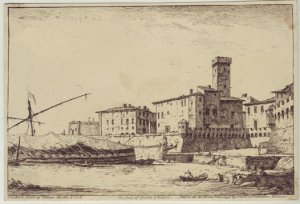
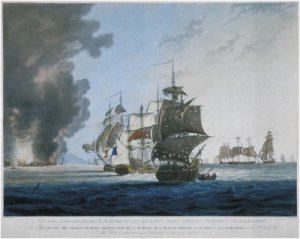
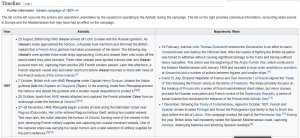
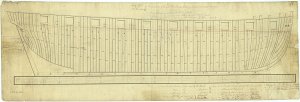
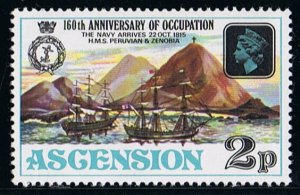
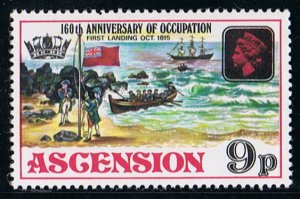

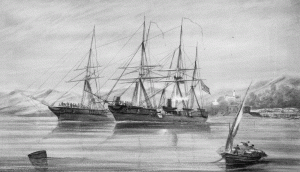
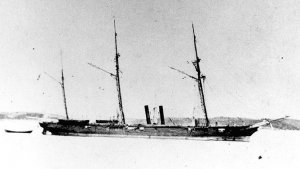
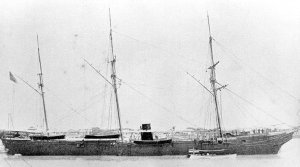

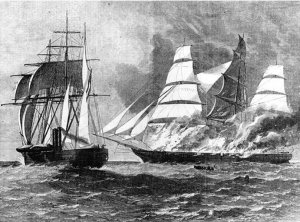
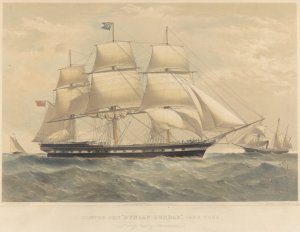

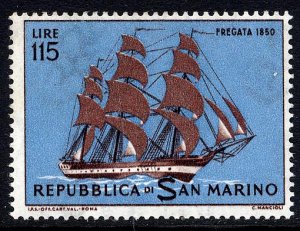
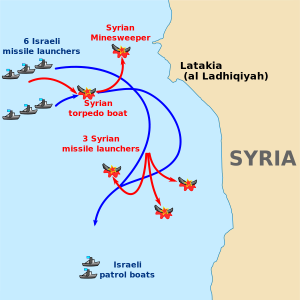
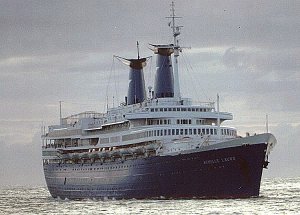
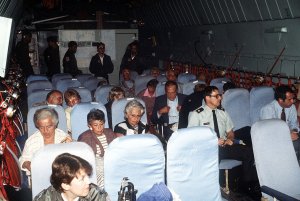
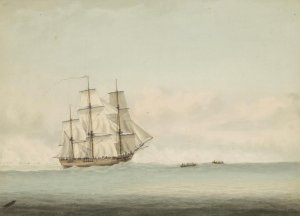
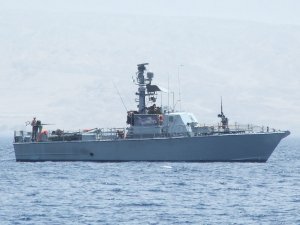

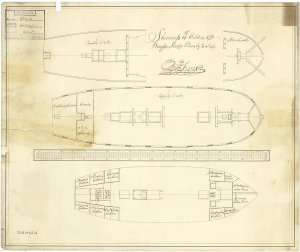

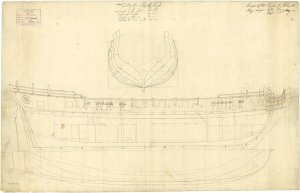
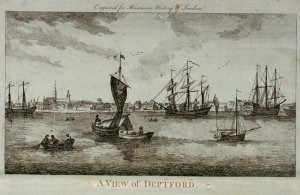
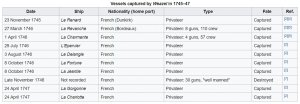
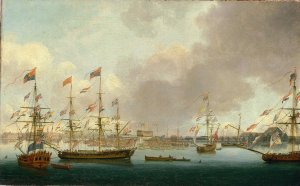
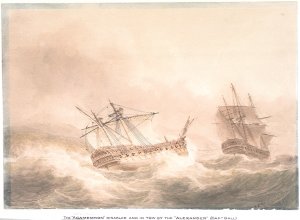


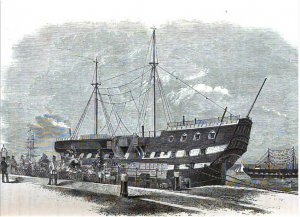
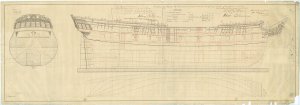
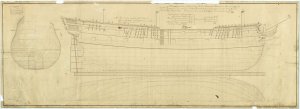
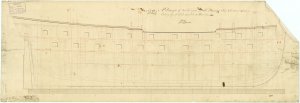
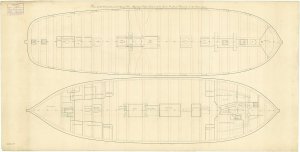
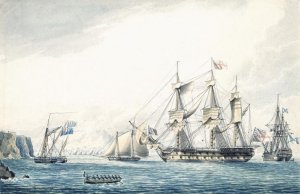

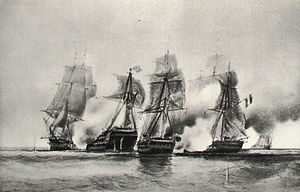

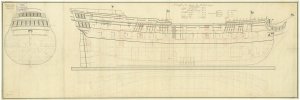
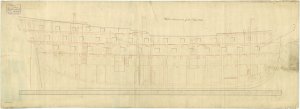
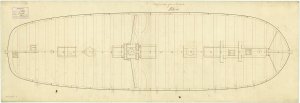
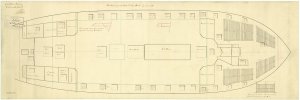
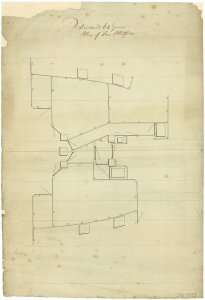
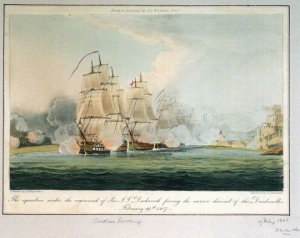
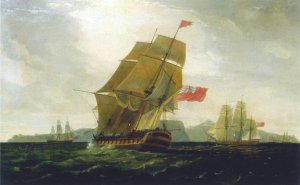
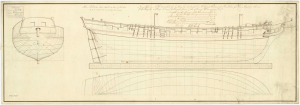
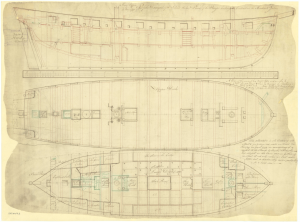
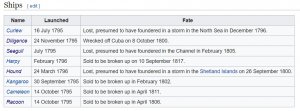
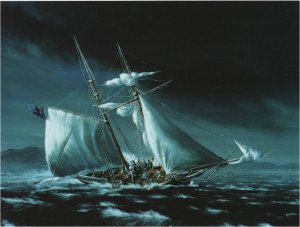
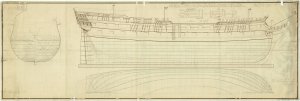
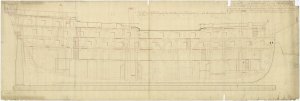
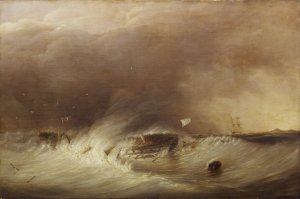
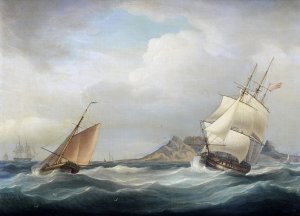
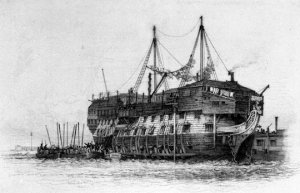

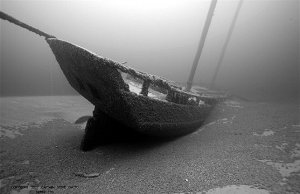
 mentioned the discovery of an 85-foot schooner on the bottom of Lake Erie, which may be Caledonia. The American company Northeast Research Ltd proposed raising the well preserved wreck and putting it on display near Buffalo, New York. In May 2010 a New York magistrate ruled that this would violate New York's "in situ preservation" policy of leaving shipwrecks intact, and where they are found. The decision has been appealed, and in September 2010 the case is being heard by U.S. District Judge Richard Arcara
mentioned the discovery of an 85-foot schooner on the bottom of Lake Erie, which may be Caledonia. The American company Northeast Research Ltd proposed raising the well preserved wreck and putting it on display near Buffalo, New York. In May 2010 a New York magistrate ruled that this would violate New York's "in situ preservation" policy of leaving shipwrecks intact, and where they are found. The decision has been appealed, and in September 2010 the case is being heard by U.S. District Judge Richard Arcara